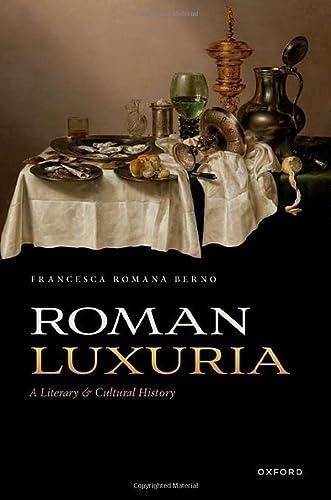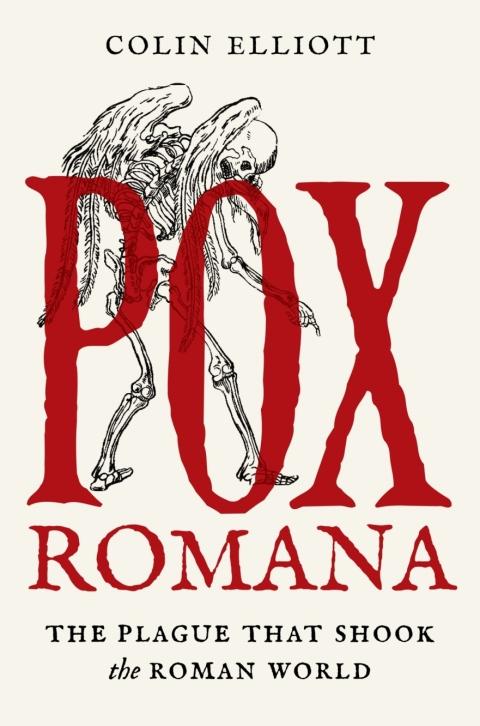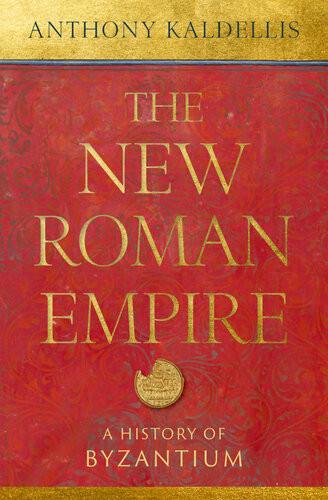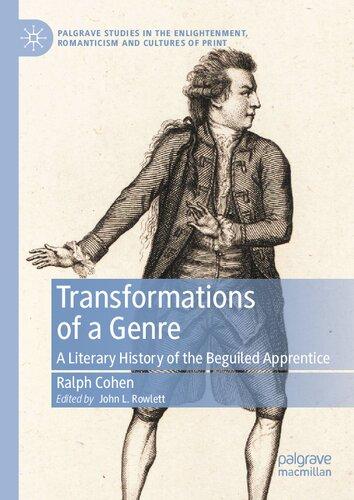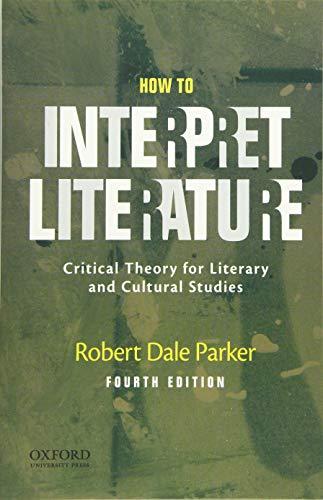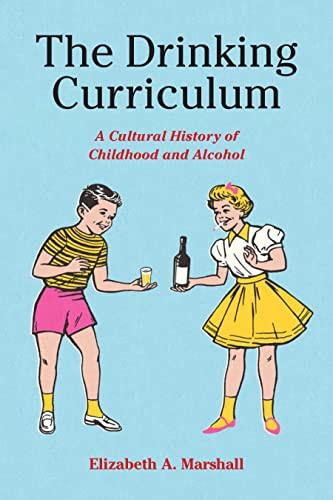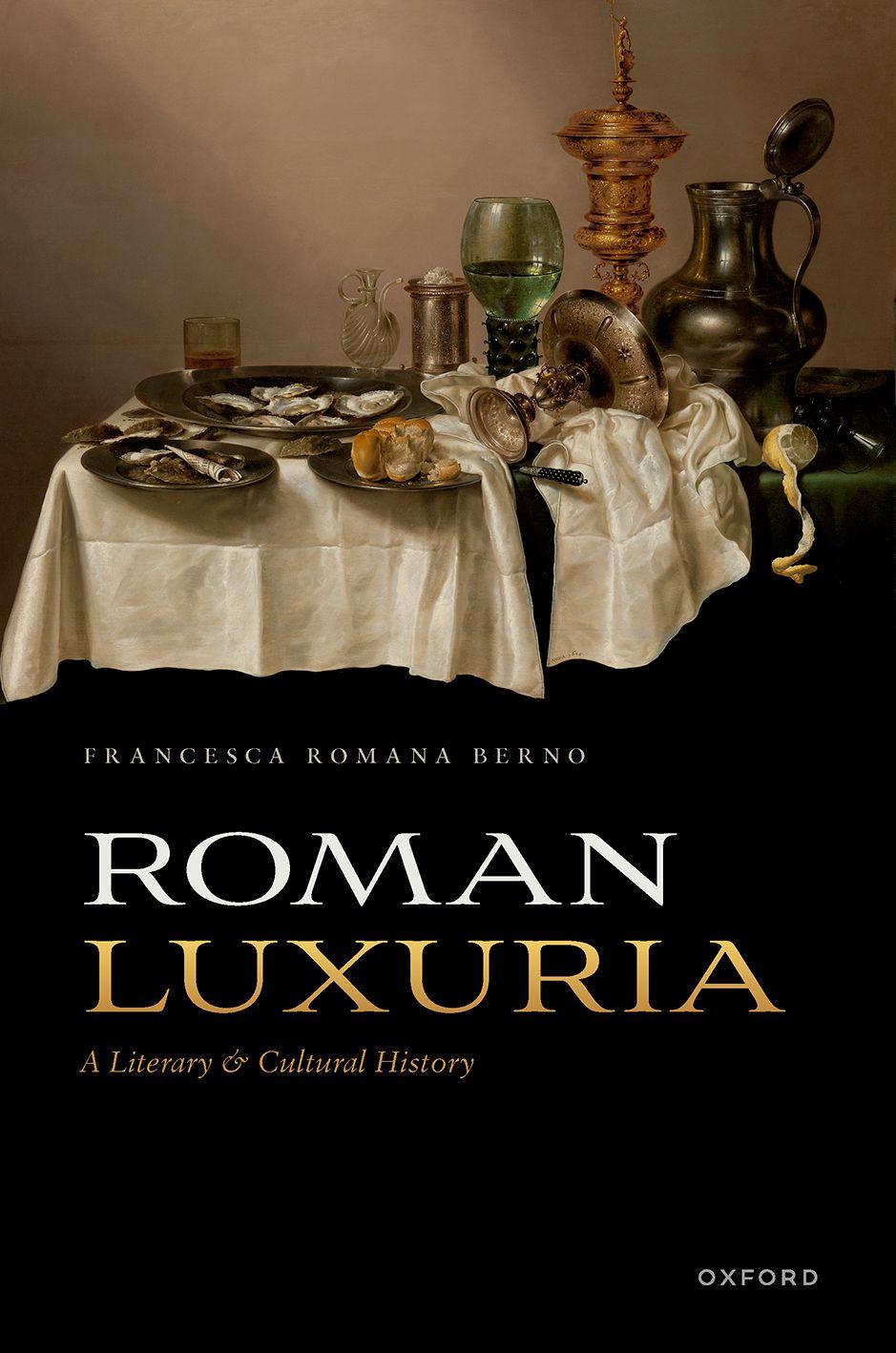What Does Luxuria Mean?
‘Elle se résigna pourtant; elle serra pieusement dans la commode sa belle toilette et jusqu’à ses souliers de satin, dont la semelle s’était jaunie à la cire glissante du parquet. Son coeur était comme eux: au frottement de la richesse, il s’était placé dessus quelque chose qui ne s’effacerait pas.’
(G. Flaubert, Madame Bovary, 1.8)
Luxuria is a difficult word to translate, because it has a nuanced meaning, which moves gradually from an economic to an erotic semantic field; in each of these we find a morally negative connotation, which often appears even in its ‘biological’ meaning. If we look in the OLD, we find the following general definitions: (1) ‘(of plants) immoderate growth or fruitfulness, rankness, luxuriance, etc.’; (2) ‘unruly or wilful behaviour (of persons or animals)’; (3) ‘indulgence (esp. excessive) in good living, luxury, extravagance’.1 The feature common to these definitions is excess, while the fields in which this excess manifests itself vary; this notion of excess is evidenced in its etymology and in its philosophical uses.
This semantic blur is further complicated by a taxonomic problem. From the ancients’ point of view, luxuria belongs to the passions, i.e. moral vices, because it is grounded in desire (below, 1.1 and 1.2); modern thinking goes in a different direction: while some ancient passions like anger or love are now labelled as emotions,2 which in turn facilitates their classification and the increasing study of them in recent years,3 luxuria cannot be defined as such. It is therefore excluded from research on the emotions and remains in limbo, and it thus becomes easier, although sometimes reasonably so, to reduce it to its material counterpart, luxury.
1 Cf. TLL VII 1.1919.53–1925.83, s.v.
2 On the theoretical issues raised by this correspondence, see (Konstan 2020). On the definition of immorality in Rome and the polysemic meaning of luxuria, see Edwards (1993), 1–9.
3 See e.g. Morton Braund/Gill (1997); Konstan (2006); Cairns (2019); with attention to the connections with Christian thought, Knuuttila (2004); Boehm/Ferrary/Franchet d’Espèrey (2016). The most studied passions are anger (Harris (2001); Braund/Most (2004); Kalimtzis (2012)), hate (Aubreville (2021), shame (Kaster (2005)), and pride (Baraz (2020)). Special scholarly attention is given to Stoic ethics: cf. below, 1.2.
Roman Luxuria: A Literary and Cultural History. Francesca Romana Berno, Oxford University Press. © Francesca Romana Berno 2023. DOI: 10.1093/oso/9780192846402.003.0001
In this introductory chapter, I shall tackle the etymological, semantic, and philosophical issues associated with this concept.4
1.1 Etymology: Twisted, Luxuriant, Luxurious: In a Word, Excessive
Luxuria is a denominal abstract, derived from luxus, plus the derivational morpheme—uro with a desiderative connotation, to which the -ia/-ies ending is added.5 It follows either the first or the fifth declension, so that the form luxuria coexists with luxuries: the former appears to be the most ancient, and is indeed attested in Plautus. Luxuries is about ten times less frequent (about fifty versus five hundred occurrences); after a quotation of Gaius Gracchus in which it is opposed to what is necessary,6 we find it twice in Caesar, sometimes in Cicero, and, with a prevalently biological meaning, every now and then after him; it reappears in Apuleius and in the Historia Augusta; no one uses this form exclusively, while many authors, e.g. Seneca the Younger, use only luxuria. Apart from metrical reasons (in poetic compositions), there may be a stylistic explanation for this coexistence: for example, Caesar employs the fifth declension form when the vice is particularly evident and undermines the character of the person who is accused of it.7
As for the original substantive, luxus, it is ambiguous in that it may refer either to excess in any form, especially luxury (so the basic meaning of luxuria would be ‘desire for excess’ or ‘desire for luxury’), or to luxation, a dislocation due to a traumatic misplacing of a joint. This second meaning may derive from the first, in the sense of an excess leading the joint the wrong way.8 It would then mean ‘desire for going out of track’. This is indeed the interpretation of Isidore of Seville (Orig. 10.L 160):9
Luxuriosus, quasi solutus in voluptates, unde et membra loco mota luxa dicuntur.
Voluptuous (luxuriosus), as if dissolute (solutus) with pleasure (voluptas); whence also limbs moved from their places are called luxus (‘dislocated’).
(Trans. Barney/Lewis/Beach/Berghof 2006)
4 Some general bibliography: Citroni Marchetti (1991); Edwards (1993); Dalby (2000); Romano (2003); Wallace-Hadrill (2008), 315–55; Baltrusch (2009); Gorman/Gorman (2014), esp. 329–44; with special attention to economic issues, Berry (1994); Aßkamp/Brouwer/Christiansen/Kenzler/Wamser (2008); White (2014); Weeber (2015); Pérez González (2021); with special attention to food, Gowers (1996); Fellmeth (2001), 102–15.
5 Below, n. 8; on -ia/-ies, see Piwowarczyk (2016), esp. 108–9.
6 ORF4 48.51 = Gell. 9.14.17: non est ea luxuries, quae necessario parentur vitae causa.
7 Below, 2.2.2.
8 DELL, 374; de Vaan (2008), 356. TLL VII 1.1934.83–4, s.v. luxus, indicates two separate meanings, with the word intended in an ethical sense is considered as a derivative from luxuria via apocope.
9 Cf. Diff. Verb. 326 A. (= 72 C.), where Isidore distinguishes luxuriosus from prodigus: luxuriosus, quasi solutus in voluptates, unde et membra loco mota luxa dicuntur. Prodigus autem sumptuosus, qui omnia porro agit, et quasi proicit. As for joint luxations, Plin. NH 17.267 luxata membra.
In both senses, the idea of excess is evident, and further stressed by the combination with desire; since ancient morality is grounded in the idea of right and virtue as something measured, and of wrong and vice as excess,10 a negative moral judgement is implied in both uses of luxuria for persons. A supplementary idea, that of softness, is frequently mentioned in association. In my opinion, this is due not so much to etymology as to the association of ideas: the association of right/virtue/ measure often goes together, in the Romans’ Weltanschauung, with that which is hard and strong, given the fact that their ideal man was a hardened farmer and soldier, sober and used to labour:11 this ideal affected their representation of the wise man, too. The intertwined ideas of wrong/vice/excess are therefore, correspondingly, linked with softness and tenderness (and also femininity and weakness). In this archetypical dichotomy, luxuria falls within the negative pole and thereby acquires the additional meaning of softening, and is charged with weakening the toughness of soldiers. Furthermore, its connection with leisure (otium), which originally indicated the time free from service in the army, when soldiers profited from licentiousness and the absence of rules, also supports its opposition to active military life.12 The perfect example in this regard is Hannibal’s so-called ‘Capuan laziness’, the Carthaginian army’s winter rest at Capua right after the enormous victory at Cannae in 216 bce, after which Hannibal never managed any further gains.13
Luxuria has some derivatives, such as the adjective luxuriosus, most frequently applied to persons, and the verb luxurio/luxurior, pre-eminently referring to the development and growth of beings.14 There are several Greek words which are translated with luxuria, and they specify the various semantic nuances of the term: tryphe, ‘delicacy’, is frequent in historiography, and derives from thruptein, ‘to crumble, to weaken’;15 asotia, ‘prodigality’, comes from asotos, ‘the one who destroys’, opposed to sos, ‘safe’;16 lagneia, ‘licentiousness’ (usually translated as
10 Scheidle (1993), 15–22 and 209–13. On the cognitive and metaphoric consequences of this idea, Fedriani (2016).
11 Edwards (1993), 20–2; McDonnell (2006), 105–41; Langlands (2018), 29–45; on the opposition with effeminacy, 161–8 (and Edwards (1993), 64–97). An ideal example of this model is represented by the Sabines (Dench (1996)).
12 On the link between literature, leisure, and morality, see Toner (1995); Connors (2000).
13 Among the many references to this episode, we may quote Livy (below, 2.3.2), Valerius Maximus (below, 2.5.1), and Seneca (below, 4.4).
14 Cf. respectively TLL VII 1.1930.37–1933.67 and VII, 1926.10–1930.30, s.v. For the adverb luxuriose, cf. TLL VII 1.1933.68–1934.20. s.v
15 DELG, 444; Beekes (2009), 560. The evidence for the equivalence comes from the correspondences between passages of Greek historiographers (below, 1.4) and Latin ones, such as Sallust and Livy (below, 2.3.1 and 2.3.2). According to Nenci (1983), 1021–2, tryphe refers to the eating habits of the upper class. Cf. Gorman/Gorman (2014), 34–65 on tryphe; 25–34 on similar terms, such as hapalos, ‘soft’, ‘tender’, habros, ‘delicate’, and chlide, ‘delicacy’. Especially on habros/habrosyne, Lombardo (1983). To these terms we may add akolasia ‘license’ (cf. Aristot. EE 1231a 15–25).
16 DELG, 1085; cf. Cic. Fin. 2.23 (below, 2.2.1).
libido) is liklely a coradical of lagaien, ‘to release’.17 Further terms may be considered from a philosophical point of view (below, 1.2).
In none of these Greek equivalents of luxuria do we find the biological meaning of the Latin noun, which is connected to fertility of the earth. This may be explained by the well-known agricultural origin of the Latin language, but there is also a possibility that it is connected with another Greek term: Ploutos, ‘wealth, money’ Indeed, according to Hesiod’s Theogony, this god was born from Ceres and a mortal hero, Iasius, in a fertile field (969–74):18
Demeter, divine among goddesses, gave birth to Ploutus (Wealth), mingling in lovely desire with the hero Iasius in thrice-plowed fallow land in the rich land of Crete-fine Plutus, who goes upon the whole earth and the broad back of the sea, and whoever meets him and comes into his hands, that man he makes rich, and he bestows much wealth upon him.
(Trans. Most 2006)
Ploutos is therefore related to the fertility of the fields (and also, evidently, with wealth as a result of agricultural activity), as is also the case with luxuria 19 Among the Greek precedents of this idea there is thus also room for mythology.
1.2 Philosophy: Luxuria within the Stoic Taxonomy of Vices (and the Platonic Soul)
Luxuria is not part of emotions such as fear, anger, or joy, which might call its status as a passion into question, but it is seen as a vice by all authors—and we know that vice and passions overlap in ancient ethics. This conundrum may be solved if we focus on the idea of desire, which as we have seen is central to its
17 DELG, 611; Beekes (2009), 819. Lagneia is the definition of the Christian capital sin translated in Latin by fornicatio, and then luxuria (below, 5.6). Paul’s aselgeia is translated by Augustine with luxuria (e.g. Epist. 93.11; below, 5.4).
18 Cf. Od. 5.125–9; West (1966), 422–4; Tomassi (2010), 251–2.
19 We may add that for the first Latin occurrence of the term of which we know, in Plautus’ Trinummus, we may point to a precedent in Aristophanes where we find Ploutos (below, 2.1.1).
meaning. Indeed, in Hellenistic and especially Stoic ethics, the taxonomy of vices is grounded in desire, because desire means dissatisfaction and instability, and prevents tranquillity. According to the Stoics, desire derives from a wrong evaluation of appearances, and so vices are originally provoked by a mistake in judgement.20
This Stoic taxonomy is most detailed in Stobaeus (esp. SVF 3.394 and 395), and a famous list of passions is found in the so-called Pseudo-Andronicus’ Peri pathon (SVF 3.397). Here, passions are all considered as kinds of desire (epithumia); we find lust, gluttony, and greediness, which are all specific ways in which luxuria can express itself. There is also a word that corresponds to the general idea of luxuria, which is philedonia, a compound of philein, ‘to love’, and hedone, ‘pleasure’; its definition is ‘epithumia hedonon ametros’, that is, ‘excessive desire for pleasures’. Excess and desire both belong to luxuria’s etymology; as we have seen, the semantic field of this word includes many kinds of pleasures in addition to those connected with luxury. In my opinion, this is how many Roman writers, and especially the Stoic Seneca, understand luxuria:21 it mixes desire, excess, and pleasures, without specific references, and this makes it fit many different contexts.
In this way, luxuria finds a place in the Stoic taxonomy of vices without losing its Roman concreteness. However, we may go even further, and look at the Platonic soul. Indeed, if we read the description of the appetitive part of the soul, the socalled epithumetikon, in the Republic, we find a passage that would perfectly fit our vice (9.580d–81a):22
‘The three parts of the soul seem to me to have three forms of pleasure, one for each individual part. Likewise three forms of desire, and three forms of rule.’
‘Can you explain that?’ ‘The first element, we say, is the one which allows a man to learn, the second the part which allows him to act in a spirited way. To the third, on account of its diversity, we found it impossible to give its own unique
20 Above, n. 4; Inwood (1985); Annas (1992); Nussbaum (1994); Sorabji (2000); Brennan (2003), 269–74; especially on Roman Stoics, Reydams-Schils (2005); Fitzgerald (2008).
21 Below, 4.1.
22 Cf. Plato, Phaedr. 238a–c; Tim. 70d–e; Phaedr. 246a–b; Vegetti (1999), 60–2. On Plato’s partition of the soul, Barney/Brennan/Brittain (2012), with Wilberding (2012) on the appetitive part; Shields (2014). On political implications of this theory, below, 1.3. Especially on the connection between desire, lust, and luxuriant plants, Tim. 86.c–d.
name, [580e] so we gave it the name of its largest and strongest element. We called it desiring (epithumetikon)—because of the strength of its desire for food, drink, sex and everything that goes with these—and money-loving, because money is the principal means of satisfying these desires.’ (Trans. Griffith 2000)
This part of the soul is fond of food, drink, sex, money, and other pleasures, which is to say that it is an all-round portrait of luxuria. This description is echoed by Apuleius in his De Platone 1.13.207 (below, 5.3),23 where luxuria occurs, not as a definition but within the examples of vices. Seneca refers to the Platonic division of the soul in EM 92.8:
Inrationalis pars animi duas habet partes, alteram animosam, ambitiosam, impotentem, positam in adfectionibus, alteram humilem, languidam, voluptatibus deditam.
The mind’s nonrational part has itself two parts—the one part spirited, ambitious, and wayward, consisting in emotions; the other base, idle, devoted to pleasures. (Trans. Graver/Long 2015)
This division received some attention from Stoics, too, especially Posidonius,24 even though these parts of the soul, which are ontologically different in Plato, likely correspond to psychological faculties in Stoicism.25 It is not my intention to tackle this question; to my purpose, it was interesting to note the affinity between the definition of the irrational part of the soul in Plato and the meaning of luxuria in its widest sense, in order to stress the relevance of this passion.
1.3 Semantics: A Word for Many Vices; Luxuria as the Opposite of a
‘Truly’
Roman Way of Life
The lack of specific references makes luxuria a word for many vices: we find it in reference to love for luxury, gluttony, drunkenness, leisure, and lust, often connected with the lexicon of tenderness and effeminacy: mollis/mollitia, ‘tender/ tenderness’, deliciae, ‘things serving one’s pleasure’ (OLD 2 s.v.), and so on. Indeed, these are all intertwined: love for luxury expresses itself mainly on social occasions such as banquets, whence gluttony and drunkenness, which lead to lust;26 hence
23 Cf. also Apul. Pl. 2.4.225, where this part of the soul is defined as a slave to lust (libido), with Fletcher (2014), 81; Simonetti (2017), 381–2.
24 Frg. A189–95 Vimercati = frg. 32; 38; 142–7 E.-K.; cf. Kidd (1988), 538–51; Vimercati (2004), 627–31.
25 Inwood (2014), with attention also to Panaetius (77–82). Especially on Seneca, Inwood (2005a), with 38–41 on EM 92; Asmis (2015), 228–30; Röttig (2022), 78–83.
26 Edwards (1993), 173–206, also with reference to prodigality; Weeber (2015), 99–114; especially on banquets, Gowers (1996), 18–21; Vössing (2004), 244–53; 533–9. On the philosophical connections between desire, excess, and lust, Blackburn (2004), 21–7.
the association with libido,27 and the semantic contamination between the two concepts. These are an immoral form of leisure, contrary to that devoted to philosophical speculation. Furthermore, this way of life often squanders a person’s assets, which in turn makes him greedy, and he thereby falls into another vice, avaritia, which is very often combined with luxuria
In sum, luxuria may refer to almost every possible passion related to objects (even in the case of lust, because other people are considered only as objects for the purpose of satisfying one’s desires), and not to relationships, as in the case of anger, for example. One might have said that luxuria refers to ‘private’ passions, but this would not be quite true: from the Romans’ point of view, private habits, despite being immoral or even disgusting, are scarcely relevant outside the sphere of personal thoughts and rumours. Actual vices are those that affect society— that is, those that have ramifications for social relationships. As Andrew WallaceHadrill puts it, ‘it is modern, not Roman, thought that restricts “morality” to the private sphere and separates it from “politics” ’.28 Wealth is not dangerous per se, but when it becomes a status symbol, a means of social distinction rather than social benefaction, it may challenge the status quo and arouse the irritation of the lower classes. The same can be said of luxurious banquets. As for leisure, it is blameworthy in that it precludes political commitments, which the Romans valued as necessary for all noblemen, and lust is legitimate if directed at slaves but problematic if it involves noblemen or noblewomen. The private dimension of feelings of guilt did exist, but was not a major issue until the Christian era. Moralistic works in pagan times addressed what we may call ‘social vices’, those that express a preference for private and individual pleasures over general interest, reversing the idea of personal sacrifice for public benefit in which Roman ethics were rooted.29 Luxuria belongs to these vices: indeed, it is cited as one of the main causes of moral decline by Roman historiographers (below, 1.4, 2.3, and 5.2). The Church Fathers, on the other hand, almost never link luxuria to wealth; in their writings, it means drunkenness and lust, and then lust alone (see below, 5.6).
The polysemic nature of the term emerges also through its antonyms, which are numerous. There is frugalitas, ‘frugality’, which is opposed to luxuria from the beginning of Latin Literature up to Seneca the Younger and Pliny the Elder, and represents one of the main virtues of the Roman ideal man.30 Severitas, ‘austerity’, which we find in Valerius Maximus and Pliny the Elder, includes economic issues within a more general ethical picture, recalling archaic sobriety. Pudicitia, ‘modesty’, is opposed to libido and also to luxuria when these two vices overlap.
27 Luxuria et libido are coupled explicitly since Valerius Maximus (below, 2.5.1); as for the semantic implications of hendiadys in Latin, Rossi (1993), 121–7.
28 Wallace-Hadrill (1997), 9; cf. Edwards (1993), 4.
29 Langlands (2018), 33–4.
30 Gildenhard/Viglietti (2020); more generally on Roman values, Wilkinson (1975), 15–35. Cf. also below, 1.4.
Sobrietas, ‘sobriety, chastity’, appears with Apuleius, in a period in which luxuria not only overlaps with but begins to replace libido
1.4
Pre-History and History of Luxuria: Greek Influences and Roman Specifics
As in culture and literature in general, Rome owes much to Greece regarding luxuria. The main inheritances are two: luxuria as a sign and cause of moral decline, due to sudden affluence through money and luxury from conquered lands; luxuria as an allotropic vice introduced by wealthy, effeminate, dissolute Eastern cultures, which affect the originally tough and sober nature of native people.31 Both motives are especially present in historiographical sources, where we find the Greek correspondent tryphe; ironically, the Eastern country singled out as a birthplace of the vice, which is Asia in Greek sources, sometimes becomes Greece itself in Roman ones.32 Each place has its East. This general opposition appears in further constellations, both spatial, such as that of the sober countryside versus the corrupting city,33 and temporal, such as that of the good old days versus present decline; the latter is omnipresent in Roman culture.
In Greek and especially Hellenistic historiography, tryphe, ‘sweet life’, represents an evolutive principle, something that occurs because of wealth and that in turn leads to hybris, ‘arrogance’. It can happen to single persons, such as tyrants, or to a ruling class, such as an oligarchy, or even to a people as a whole (in a democracy).34 A pivotal text in this regard is in the opening of Thucydides’ Histories (1.6.1–4):35
31 Griffin (1985a); Edwards (1993), 22–4; Isager (1993); McDonnell (2006), 259–65.
32 Dalby (2000), 118–77. On tryphe in Greek historiography, above, n. 15; below, n. 34.
33 In Rome, it is especially frequent in the Augustan age, e.g. in Horace, with the Aesopic tale of the town mouse and the country mouse (Serm. 2.6.77–115), and in Propertius (below, 2.4.3). Cf. Harrison (2007).
34 Passerini (1934), 44–51; Cozzoli (1980); Nenci (1983); Gorman/Gorman (2014). The authors maintain that the link between luxury and corruption is largely a Roman invention, but this goes against literary and historical evidence: Murray (2017). With special regard to Hellenistic historiography, cf. De Martinis (2022).
35 Hornblower (2003), 25–7. Cf. Eur. Tro. 996–7 (Hecuba against Helen): ‘. . . Menelaus’ palace/ was too small: it cramped your riotous desires (tryphai).’ (Trans. Shapiro 2009); Dem. 21.159.
Indeed, all the Hellenes used to carry arms 3. But the Athenians were the very first to lay aside their arms and, adopting an easier mode of life, to change to more luxurious ways. And indeed, owing to this fastidiousness, it was only recently that their older men of the wealthier class gave up wearing tunics of linen and fastening up their hair in a knot held by a golden grasshopper as a brooch 4. An unpretentious costume after the present fashion was first adopted by the Lacedaemonians, and in general their wealthier men took up a style of living that brought them as far as possible into equality with the masses. (Trans. Forster Smith 1935)
Thucydides links the decline of the Athenians to a loosened lifestyle departing from the sober and military attitude that had become limited to the Spartans. This scheme, enriched by Polybius’ theory of social decline, will be imitated by almost all Roman historiographers. Indeed, Polybius’ account may be considered as the birth date of Roman luxuria (31.25.4–7):36
Some young men squandered their energies on love affairs with boys, others with courtesans, and others again upon musical entertainments and banquets and the extravagant expenses that go with them, for in the course of the war against Perseus and the Macedonians they had quickly acquired the luxurious habits of the Greeks in this direction. 5. So far had the taste for dissipation and debauchery spread among young men that many of them were ready to pay a talent for a male prostitute and 300 drachmae for a jar of Pontic pickled fish. 5a. It was in this context that Cato once declared in a public speech that anybody could see the Republic was going downhill when a pretty boy could cost more
36 Walbank (1979), 500–1. On Polybius’ theory of cyclical decline, Walbank (2002), 200–8.
than a plot of land and jars of fish more than ploughmen. 6. These extravagances became disgracefully ostentatious at the period which I am describing; the reason was first of all the belief that after the destruction of the Macedonian kingdom the universal supremacy of Rome had been established beyond dispute, 7. and secondly the fact that after the riches of Macedon had been transported to Rome there followed a prodigious display of wealth and splendour both in public life and in private. (Trans. Scott-Kilvert 1979)
In this passage, the author traces back the introduction of luxuria to the war against Perseus of Macedon (168 bce), and connects it with the transfer of money and habits from the East. As we shall see, other authors will identify the beginning of moral decline with other events, e.g. the definitive defeat of Carthage (146 bce) according to Sallust, or Manlius Vulso’s triumph against Asia (187 bce) according to Livy.37 Yet the dynamics are identical: Romans offer a cultural explanation for the fall of the Republic, namely the corruption of mores.38 Even if the specific word tryphe is not present, the description of vices (especially homosexual lust and excessive wealth) corresponds to luxuria’s main semantic fields. In Polybius, the keywords are euchereia (25.4) and eudaimonia (25.7), exhibited both in private and in public (another leitmotiv of the Roman moralists).39 Another interesting detail is the quoting of Markos (25.5a) as speaking against luxury. This is of course Marcus Porcius Cato (234–149 bce), called ‘The Censor’ not only for having held that magistracy but also for his tireless rigid attitude against vices in general, and Greek vices in particular.40 Even if we only possess a few fragments from his speeches and works, apart from a technical treatise on agriculture, we find in them all the main subjects on which subsequent Roman literature will blame vices.41 I think it undoubtable that Cato shaped Latin moralistic literature and acted like a filter through which Latin authors read Greek historiographers. So even though there are no occurrences of luxuria in his work, this is probably due to the today fragmentary nature of his speeches and historiographical and moralistic works, and I therefore give him a place in this book (below, 2.1.2). This model of decline that we find in the historiography is supported in philosophical literature: the connection of tryphe with wealth is emphasized by Plato (Rep. 4.422a):42
37 Liv. 39.6.7. As for the year 146, we may add Vell. 2.1.1. Of course they draw, in their turn, on other historiographical sources: below, 2.3.2 with n. 146.
38 Lintott (1972); Edwards (1993), 177–8; Wallace-Hadrill (1997), esp. 9.
39 See below, 2.2.1 (Cicero) and 2.4 (Augustan age).
40 Letta (1984), esp. 19–22. At p. 20, Letta theorizes that Cato identified the beginning of the decline with the taking of Syracuse (211).
41 Below, 2.1.2 with n. 28.
42 On vices in Plato’s Republic, Renaut (2020), esp. 80–7; cf. following n. This idea is further developed by Polybius (e.g. 6.7.7–8) and comes back also in Ps. Longinus’ Sublime (44.7). In general, on luxury in Plato, Berry (1994), 45–62.
‘Wealth and poverty,’ said I, ‘one produces luxury, idleness and revolution, the other meanness of spirit and poor workmanship—and of course revolution as well.’ (Trans. Griffith 2000)
In the same dialogue, Plato attributes to the excess of wealth and to growing social gulfs among the citizens the degeneration from oligarchy to democracy, because the oligarchs’ sons are raised in leisure and sloth (Rep. 8.556b–c). This way of life makes them weak, unhealthy, and unable to go to war, and when the poor but healthy people realize their feebleness, it becomes easy for them to overthrow the state (Rep. 8.556c–e). Already in the Gorgias, the aristocrat and sophist Callicles states that true happiness and virtue consist in debauchery, intemperance, and licence (Gorg. 492c):43
No, in good truth, Socrates—which you claim to be seeking—the fact is this: luxury and licentiousness and liberty, if they have the support of force, are virtue and happiness, and the rest of these embellishments—the unnatural covenants of mankind—are all mere stuff and nonsense. (Trans. Lamb 1967)
Of course, Socrates shows that this is rather a type of suffering, since it implies permanent dissatisfaction, not very different from that of people doomed in myth; he illustrates the reasoning with the famous image of the soul as a drilled vase, which is impossible to fill (492d–494e). All these themes will be developed in regard to luxuria, too, especially by Seneca.
A specific trait of the phenomenology of tryphe is environmental determinism: this vice is indeed, as we have seen, associated with Eastern lands, due to a natural influence of the mild weather and the fertility of the land on human complexion, as stated in Hippocrates’ essay On Airs, Waters, and Places.44 Again, historiography leads the way: at the end of his Histories, Herodotus refers to a link between soft places and weak men.45 In Greek culture the city Sybaris, in Magna Graecia, was known for its sweet, luxurious life, to the point that a verb was derived from
43 On this passage, as well as those from the Republic, Pontier (2020), 47–53.
44 See esp. Hipp. De aere 12.2–3; 16.1–2; 23.3, who emphasizes in particular the difference between weak Asians and strong Europeans.
45 Herodot. 9.122.3. On Herodotus’ account of this topic, Dorati (2003), esp. 508–13; Gorman/ Gorman (2014), 80–94 (but see above, n. 34).
the toponym, sybarizein, which meant ‘to live in a Sybaritic way’.46 Roman culture replaced Sybaris with Capua, even if neither this town nor the Campanian seaside, which is referred to as a place of licence, led to a corresponding Latin verb.47 The analogy between Sybaris and Capua was already established by Polybius (7.1.1–2 = Athen. 12.528a):48
The people of Capua, in Campania, becoming wealthy through the fertility of their soil, degenerated into luxury and extravagance surpassing even the common report of Croton and Sybaris. (Trans. Schuckburg 2002)
These places are not strictly speaking Eastern, of course, but in southern Italy, they are still both perceived as foreign by Greek and Roman writers, who compare them to Asian locations. Besides Capua, we find Baias, located in the same region. Baiae becomes a renowned holiday place from the first century bce on, and all authors, especially Cicero, Propertius, and Seneca, consider it the ideal location for an immoral life, a location which affects even the wisest person with luxury and lust.49 There is thus a theoretical link between the biological and the moralistic meanings of luxuria: people’s weakness and the softness of life derive from the soil’s luxury. The ease of procuring sustenance affects the human body and soul: as many ancient myths report, after the Golden Age, in which everything was easily available, the gods made it difficult for humans to acquire food, and this was the beginning of humanity proper. Places like Sybaris and Capua are disturbing examples of a recreation of the Golden Age, when people did not need to work. Literary tradition, having retraced the mythical history of the fall of pre-historical human beings, points at a licentious lifestyle and consequent arrogance as causes of the fall of these cities.50
46 It is found e.g. in Aristoph. Pax 344 (where it has been emended by Meineke to sybariazein, which has the same meaning, for metrical reasons). Sybaris was in southern Italy, in today’s Calabria. On its legendary story, Gorman/Gorman (2014), 7–25. Among Latin authors, Sybaris as a luxurious place recurs in Seneca (Ira 2.25.2) and Quintilian (Inst. 3.7.24, quoted below 2.7.2); Ovid (Trist. 2.1.417) and Martial (12.95.2) refer to a collection of licentious poems entitled Sybaritica. Cf. Hor. C. 1.8.1–3. Partially similar meanings were attributed to Lydia and Ionia, two areas in Middle Asia: Dorati (2003).
47 For Capua, below, 2.2.1; 2.5.2; as for other Campanian locations, below, 4.3. On luxury in these places, see the studies in Aßkamp/Brouwer/Christiansen/Kenzler/Wamser (2008), especially Kloft (2008); Montone (2010); Weeber (2015), 89–98; especially on Baias, below, n. 49.
48 Walbank (1967), 29–30.
49 Below, 2.2.1; 2.4.3; 2.5.3; 2.6.2; 4.4; 5.1; 5.2.1; Schmatz (1905); Griffin (1985b); Citroni Marchetti (1991), 121–4; André (1993), 59–63; Stärk (1995); Busch (1999), 230–5; Connors (2000), 499–504; Hönscheid (2004), 16–18; Weeber (2015), 89–98. On the development of villas on the bay of Naples, D’Arms (2003).
50 For Sybaris, see e.g. Philo, Spec. 3.43–4 (a list of the sources in Gorman/Gorman (2014), 23–4); for Capua, above, n. 47.
So the degeneration from sobriety to luxury traces back to the fall from the Golden Age, where want of anything was unknown, to the Silver Age, characterized by desire. This happens in Evander’s historical description to Aeneas in the Aeneid (8.324–7):51
Aurea quae perhibent, illo sub rege fuere saecula: sic placida populos in pace regebat, deterior donec paulatim ac decolor aetas et belli rabies et amor successit habendi.
Under that king passed the age they called golden: thus, in calm peace was he ruling the nations until little by little, an age, inferior and of duller hue, succeeded it, and the frenzy of war and the love of possessing. (Trans. Fratantuono/Smith 2018)
Evander’s expressive narrative concerns Rome and its native inhabitants, Fauni Nymphaeque (l. 314), who were uncivilized and strong, and then came to be governed by the god Saturnus, who launched the Golden Age. The degeneration to the Silver Age is described as decolor (l. 326), in that silver is less shiny and brilliant than gold, but of course this attribute also expresses a moral judgement, for the Silver Age is characterized by war (l. 327 belli rabies) and love for possessions (amor . . . habendi). This periphrasis alludes to the vice of avaritia, frequently criticized in the Aeneid, 52 but also refers to a more general attitude of excessive desire, which coincides with luxuria, which in turn is frequently associated with avaritia. Historiographical and moralistic descriptions of the degeneration of Roman morality, from a strong and rigid frugality to an attitude of restless desire for money and pleasure, such as in Sallust,53 retrace the mythical narrative of the decadence from the Golden to the Silver and Bronze Age, with a key difference: while in the mythical stories war is seen as a sign of degeneration and as a consequence of desire for money and/or power, in the historiographical accounts war appears in the Golden Age, too, and only its consequences, such as excessive booty and money, and lack of discipline in the army, are considered negative for Roman civilization, while peace, with its absence of threatening enemies and with its dangerous state of leisure, leads to luxuria itself. This is due to the economic and social ubiquity of conquering wars in ancient civilization, which leads writers to confine peace to legendary places and times, or to identify it with immoral leisure. And this is why both Sybaris and Capua resemble the life of humankind during the Golden Age, as well as the fatal loss of that heavenly condition.
51 Fratantuono/Smith (2018), 430–3. On this topic, Harrison (2005), 291–6.
52 Cf. the catchphrase auri sacra fames (3.57). 53 Below, 2.3.1.
Thus far I have listed some common features of the Greek and Roman way of thinking. But, of course, Roman luxuria also has more specific and nuanced traits.54
First, it appears in several prose genres: historiography, oratory, and more or less philosophical essays. It is very rare in poetry, including satire, surprisingly. This happens not for metrical but for mainly stylistic reasons: poetry generally avoids abstract words; furthermore, luxuria is a low-style word, while e.g. luxus is part of the poetic lexicon. It is indeed striking that in authors such as Persius and Juvenal, despite their treatment of immorality, luxury, and banquets, luxuria receives little attention. Satire seems to show rather than to label: things and behaviour are more convincing than moralistic exhortation. Despite his prescriptive role, the satirist does not resort to abstract definitions, but prefers to follow the rhetorical principle of evidentia: to show things—vices—instead of inveighing against them. He despises abstract terms, because realism is a key feature of satire. Orators, on the other hand, need to level moral accusations against adversaries; historiographers offer explanations for cultural decline and thereby judge generals and emperors from a moralistic standpoint; and Roman philosophers are almost exclusively devoted to ethics. So these three groups are the likeliest to use the word luxuria.
Second, the main criterion for identifying an example of luxuria is a distinction in its function: if the behaviour in question happens for private reasons, it is a passion; if it happens for the sake of public interest or enjoyment, however, then it is not a vice but an exhibition of magnificence, which is legitimate and even desirable for the Roman Empire. This principle is expressed in the Ciceronian sentence privata luxuria, publica magnificentia (Mur. 76).55
Third, luxuria is centred around specific areas: jewels and clothes, and especially banquets.56 Only a few occurrences regard architecture;57 this is the case, in my opinion, because in architecture the boundaries between private and public (see the second point) are blurred: most Roman magistrates, not to mention the emperors, performed their professional duties at home, so their houses did in fact have the public purpose of displaying the magnificence of Rome. Banquets are
54 For a general bibliography, see above, n. 4.
55 With this statement, Cicero disagrees with Aristotle, whose definition of megaloprepeia includes both public and private expenses (EN 4.5.1122b19–b22; 1122b35–1123a5), unless, in the case of the latter, they are undertaken for the purpose of showing off one’s assets, in which case they are the opposite of megaloprepes, i.e. banausos (EN 4.6.1123a24–7). Cicero may have had Demosth. Olymp. 3.25 as a model. Cf. Sall. Cat. 52.22 (below, 2.3.1); Hor. C. 2.15.13–14 (below, 2.4.1 n. 165); Val. Max. 4.4.9; Plin. paneg. 51.1–2. On Cicero’s statement, which we also find in Vell. 2.1.2, see Gildenhard/ Viglietti (2020), 6–39; below, 2.2.1. On the distinction between private and public, see also above, 1.3.
56 On precious stones and jewels, Hermann (1959); Naumann-Steckner (2008); Schmauder (2019); Pérez González (2021), 129–43; on pearls, Pérez González (2021), 115–27; on clothes, Maier (2004); Pérez González (2021), 145–70; on perfumes, Pérez González (2021), 171–9; on banquets, Vössing (2004), esp. 244–53; on luxury furniture for banquets, D’Arms (1999); Weeber (2015), 15–36; Lista (2008) (tableware); Bischop (2008) (glasses); Weeber (2015), 137–49 (tables); on foods, Gowers (1996); van der Veen (2003).
57 Which is a widespread theme: Edwards (1993), 137–78; on luxury architecture, Weeber (2015), 43–62.
without a doubt the main vehicle for luxuria. This makes sense: eating is a necessary act, the most natural of all, and its perversion thereby reveals the danger of this vice, since luxuria here goes against nature, as it were, and clouds people’s reason, reducing them to their beastly and stomach-centred instincts. Furthermore, food and drink in a banquet are short-lived goods lasting only a few hours, which emphasizes the ephemeral nature of pleasure and the waste of money more than e.g. jewels can, which last very long—it is not a coincidence that the jewellery appearing most often in the context of luxuria is pearls, which are more fragile than jewels, and especially Pliny the Elder emphasizes the luxury of refined fragile objects, such as glass and earthenware, as an extreme form of vice.58 As for foods, there is a special focus on fish,59 not only because it is more expensive and difficult to come by than meat but also, in my opinion, because it belongs to an environment, the sea, that is different from that of humans, the earth. Eating fish exemplifies the breaking of natural rules, since their consumption requires humans to cross environmental boundaries. This is all the more the case with mullets, sea urchins, and so on, which are creatures in between animals and plants, and thus cross the boundaries between species; the same can be said about mushrooms. Furthermore, the aspect of these foods, mysterious and apparently deprived of distinctive animal traits, such as some sort of skin, organs, and so on, and also the fact that they are often mixed together in an indistinct course, presage the disgusting melting together in the stomach (or in the vomit that these foods sometimes provoke): a picture of the filthy appearance of the despicable soul.
Fourth, and last, there is a development in the frequency, evaluation, and even meaning of the term luxuria. While it is present but not frequent in archaic literature (which more often involves concrete critique against expenses, sumptus), it is often used in the late Republic (especially by Cicero and Sallust), almost disappears in the Augustan age, and then bursts onto the scene as a central theme in Neronian times; subsequently, it retains about an average level of frequency among the vices most discussed. The increasing interest in luxuria in the Republican age may be explained both through linguistic reasons—abstract nouns are treated with diffidence and take time to enter common use—and through sociocultural ones: these are the years in which the close contact with Eastern peoples, and the influx of wealth from these new provinces, confront Rome with different ways of life that challenge the rock-solid belief in the mores maiorum as the only possible moral compass. This is the period in which luxuria spreads throughout Roman culture: Cicero and Sallust describe this phenomenon as the decline of the formerly strong and frugal Roman people. The Augustan age,
58 Below, 2.5.2. Cf. above, n. 56.
59 This is evident in Pliny the Elder and Seneca the Younger (below, 2.5.2; 4.3), but we find it in almost all of our authors: already Ennius with his Hedyphagetica and Lucilius in his satires, in neither of whom the word luxuria occurs, feature fish as a luxury food; cf. La Penna (1989), 4–10.
however, is more reticent on this vice because of political propaganda seeking to focus on the restoration of ancient frugality, and because writers try to justify luxury as being in the public interest. During the Julio-Claudian dynasty, writers face more immediate issues, such as using moral suasion to limit the emperor’s absolute power. Fighting luxuria here becomes a way to criticize the morality of the court, where the most extreme examples of this vice are found, while still avoiding explicit political dissent. Nero becomes a litmus test in this regard: other emperors are evaluated by comparison with his behaviour. At the turn of the first to the second century ce , after centuries of critique of this vice, or of its luxuryrelated manifestations, it is no longer labelled as a mark of evil, but is accepted as connatural with nobility and political office, not only de facto but even on a cultural and literary level. This process, which is accelerated through the conversion of the Republic to Empire, is given a further impetus by Tiberius’ refusal to promulgate sumptuary laws, and it ends with Pliny the Younger’s peaceful acceptance and quiet exhibition of luxury.60 Hence the disappearance of the term luxuria to label wealth, banquets, and so on: it is almost completely absent from Pliny the Younger’s writings. Historiography is an exception to this process, both because it looks at the past, and because luxuria plays a role in the moral portraits of the emperors, having become a benchmark of Nero’s manner—that is, of a tyrannical attitude.
At the same time, luxuria begins to overlap with libido, ‘lust’, which at first is only a secondary meaning or a related concept. This semantic twist, which is evident in Apuleius, is further developed by the first Church Fathers, and ends in the classification of Luxuria as ‘Lust’ among the Seven Cardinal Sins of the Christians.
1.5 Concluding Remarks
The Roman fight against luxuria lasted as long as their history as a powerful Republic and Empire, and then shifted to the Christian fight against its erotic meaning. The Romans linked luxuria with wealth, moral decline, and military weakness, and attributed this passion to the ultimate motivations of every political crisis. This idea was so rooted in their way of thinking that it even imbued the divine sphere: Cassius Dio, while narrating Tiberius’ reign, reports a Sibylline prophecy (57.18.5):
60 On this process of acceptance, Toner (1995), 65–88; 117–27.
When thrice three hundred revolving years have run their course, civil strife upon Rome destruction shall bring, and the folly, too, of Sybaris . . .
(Trans. Cary 1955)
Civil war and Sybaritic madness (aphrosyne) led the Romans to destruction.61 Vice as a form of mental illness, and as a cause of social and political decline, were seen to last for all of Roman history. Even when Christianity changed the way in which vices were evaluated, lending much more importance to the private and intimate sphere, and focusing on luxuria in its erotic sense, this idea of illness and decline persisted, to the point that luxury has remained a challenging issue, despite Enlightenment rehabilitation, capitalism, liberalism, and so on.62 Luxuria is not officially a passion or a vice any more, but we are still afraid of the immoral effect of excess, desire, and luxury, and torn between the seductions of pleasures and a mixed sense of fault, fear, and disgust that may be traced back to Cato the Censor.
61 Ps.-Pyth. apud Stob. 4.1.80 Wachsmuth-Hense—in the cities there is first tryphe, then koros, then hybris, then death—with Novara (1992), 55.
62 Berry (1994), 99–242.
